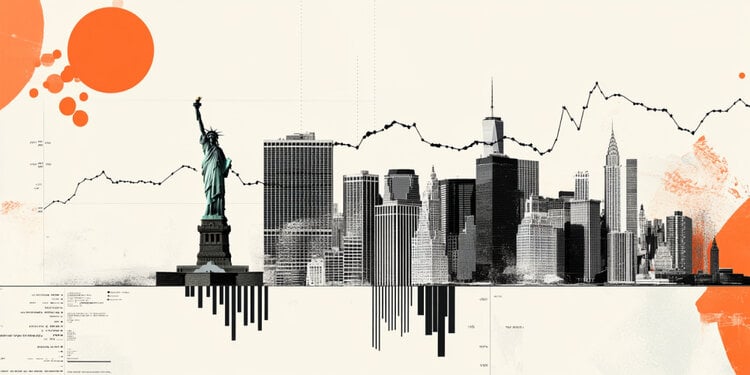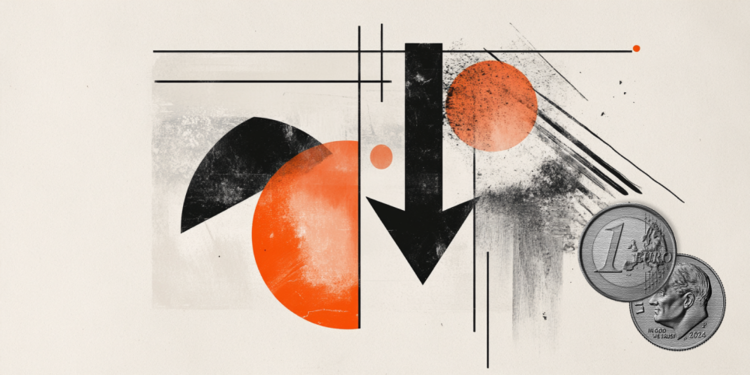When an economy “runs” a growth marathon, with +8.2% in 2021 and about +4% in 2022, its stock market, if nothing else, one would expect to follow its upward trajectory. And yet it remains “stuck” in a range of 800-900 units, offering scope only for short-termists who draw patterns according to the flow of international developments.
And the big question, now, is what caused the stagnation of the market, with the General Index at the same levels as it started the year, and clearly much lower than the highs of February (973 points), when expectations also saw even the 1,000 units?
This is the question that dominates the market in the months that followed the Russian invasion of Ukraine, that is, from the end of February, when the decline of the A.H. began, leaving the longs for another year to wait for the long-awaited “explosion” and breaking the six-year cycle of triple-digit levels. A question that even the faithful of L. Athens, in the stone years of the crisis, did not think would be asked, when they saw the A.A. to outperform globally in the first two months of the year.
Unlucky timing
As noted by several domestic analysts, the A.A. it once again missed the train of the great rise, when it was called upon to face an unprecedented international environment, which has even led major western indices into the territories of a bear market. That is, at the time when the A.A. had entered a path of strong recovery and attracting large capital, the risk off came from investors who were called to defend their acquisitions in a difficult environment. And of course, the risk off took out of their plans markets that operate in an economy that does not even have an investment grade, even if the “promises” it gives are great.
Of course, there are not a few analysts who believe that the A.A. has performed very well, if one considers that so far it has covered, twice in fact, the damage of the dip around 800 units, at a time when the losses of the developed markets since the beginning of the year exceed 10%. But that is clearly not enough for a market that has been retreating to levels below 1,000 since 2016, with a host of domestic investors anticipating their own bull market.
3+1 catalysts
What most, mainly foreign analysts, agree on is that the A.A. has been caught in the international scene of uncertainty made up of tightening central banks, “broken” supply chains and the war in Ukraine, catalysts that have driven the consumer price index to unprecedented levels. And in this setting, one should not forget the developments on the political front, which have suspended most investment initiatives until there is better visibility of Maximos’ electoral intentions.
And such a scenario is likely to be maintained throughout the semester, perhaps even “spreading” into early next year, making any long initiative a high-risk exercise in an economy that is off the radar of long-term investors due to a lack of investment tier. It is the price of the “inheritance” of the crisis that A.A. is paying.
After all, as Teneo’s Wolfang Piccoli recently reported to Politico, Greece may be emerging from enhanced surveillance (8/20), but it is facing new challenges. According to him, “inflation is at the highest level in the last 29 years, wages are still very low”. “There are new economic challenges that are completely overriding right now. Voters’ focus is on the real economy and not on technical issues,” Piccoli said.
The worst case scenario for Europe
Clearly the A.A. cannot be fully differentiated from the rest of the European markets, which are discounting a very difficult winter ahead. The strength of A.A. will soon be tested by the new alarming signals sent by the international bond markets and while annual inflation in Britain was measured above 10% for the first time in the last 40 years. Under these conditions, the next moves of the European Central Bank in the effort to combat the surrounding atmosphere of galloping inflation will be of particular importance for the risk-taking mood on Athens Avenue as well.
At the same time, Citigroup estimates that the worst-case scenario is now becoming the baseline for Europe, with deep recession hitting with certainty. As it notes, its recent assessment of a mild recession in the Eurozone has become overly optimistic, with gas prices having risen a further 30% and key economic indicators pointing to a recession like that of 2011/12 or even 2008. /09. Policy action can still avert the worst, but a deeper recession and prolonged weakness will now be hard to avoid.
Thus, Citi reduces its forecasts for GDP growth for 2023 to -1% for the euro zone and -2% for Germany, while a recession of 0.9% is also forecast for Italy. A return to the pre-pandemic path of economic potential seems unlikely unless monetary-fiscal policy coordination brings about a significant acceleration of investment, as he underlines.
Real GDP growth in the Eurozone in the first half of the year and inflation in July support Barclays’ estimate that the ECB will proceed with another aggressive rate hike of 50 basis points in September. However, the Bank of England’s baseline scenario of a mild recession in the Eurozone is turning to the optimistic scenario and now sees a deep and longer recession. With this data, he believes that the ECB will stop the tightening cycle before the end of 2022.
According to JP Morgan, Europe will slip into recession in the second half. Despite a stronger-than-expected 2.8% euro zone GDP in the second quarter, the recent rise in natural gas prices and slipping business confidence lead the US bank to estimate that the region’s economy will contract later this year . If no energy vouchers are implemented, it predicts a mild contraction in GDP and a modest increase in unemployment rates. If gas rationing is implemented this winter, the Eurozone will likely experience a deep contraction.
Also, according to Moody’s, most central banks in Central and Eastern Europe have already started to raise interest rates in response to inflation, but slowing economic growth, increased debt burdens and a divergence in the business cycle will complicate efforts European Central Bank. “Although the ECB has raised interest rates, the indicative Taylor rule suggests that its monetary policy is too expansionary for the three main EU economies and the euro area as a whole. If its actions continue to lag the Fed’s, the euro could continue to depreciate and further fuel inflation,” Moody’s warns.
Bank of America, for its part, points out that the possible catalysts for the improvement in the economic climate are: (a) the news that Europe seems to have avoided the worst-case scenario of a complete Russian gas cut-off for now, and ( b) the fading of fears that the Fed will have to tighten monetary policy too much in response to high inflation.
However, he warns, risks around growth remain and are significant: the bullish PMI pricing in the market contrasts with signs from last week’s ECB bank lending survey, which showed that banks expect credit conditions will become tighter than they were during the eurozone crisis. This suggests a further significant drop in the PMI to 43 points by the end of the year, and to levels seen on average when Europe entered recession.
Given the increased risks that investors may face regarding the growth of the economy in the second half of the year, Goldman Sachs, for its part, recommends a defensive stance on risk assets over a three-month horizon. “There will need to be additional clarity from the macroeconomic front to talk about a sustained and prolonged market turnaround,” the US bank said.
Will A.A. see 1,000 units?
Most analysts do not fail to highlight the attractive valuation levels that most of the market’s securities are at, considering that a fixation below 1,000 points is unfair to the market. After all, being only 10% (±) away from the level that will signal the market’s transition into a new cycle is not a prohibitive distance, even in this difficult international environment.
As most domestic analysts note, a strong catalyst that can come even in the autumn is to upgrade the Greek economy to the club of developed economies, putting its market on the radar of funds that had “bans” on the activation of junk assets . And after recent moves by S&P and DBRS, which brought Greece just one rung ahead of investment grade, keeping within reach the government’s goal of regaining that milestone by 2023, the market is hoping that similar positive news will be “heard” soon (remember that investment grade is considered any rating from BBB- and higher).
The minimum investment grade (BBB-) will open the door wide to “conservative” investors, such as insurance funds and insurance companies that invest in bonds for savings. Consequently, yields will automatically fall, while the markets will again price Greek bonds, which will be even more tradable. With lower yields, the stock of government borrowing will begin to decline, making debt deleveraging increasingly comfortable. The chain of benefits that will follow from then will give new impetus to the market, in addition to the strong short-term momentum that will bring the General Index closer to the 1,000 mark.
However, in order to confirm the market’s expectations, Greece must of course meet 7 common indicators, based on which all rating agencies (Moody’s, S&P Fitch, DBRS, Scope) upgrade – or downgrade – the creditworthiness of each country independently by the economic situation. These indicators focus on debt management, continuous contact with markets, fiscal adjustment, sustainable growth, financial system health, political stability and, finally, ambiguity in the current international environment.
Source: Capital
I am Sophia william, author of World Stock Market. I have a degree in journalism from the University of Missouri and I have worked as a reporter for several news websites. I have a passion for writing and informing people about the latest news and events happening in the world. I strive to be accurate and unbiased in my reporting, and I hope to provide readers with valuable information that they can use to make informed decisions.







